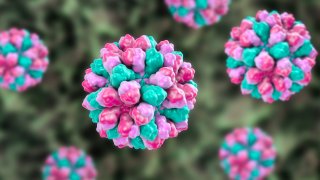
Norovirus, computer illustration. Norovirus is a genus of RNA (ribonucleic acid) viruses (of the family Caliciviridae), which cause about half of all gastroenteritis cases around the world. The disease is characterised by nausea, vomiting, diarrhoea and abdominal pain. The diarrhoea results in fluid loss and dehydration, which may become life-threatening in the young, the elderly, and the immunocompromised if not treated promptly.
The New Jersey Department of Health is reporting that there are more than two dozen outbreaks of Norovirus in the state.
As of Friday, Jan. 10 at 11 a.m., there are 30 reported outbreaks of the virus in 2025 in the Garden State.
According to the health department, there were 70 outbreaks in December of 2024 and 15 in December of 2023.
Get top local stories in Philly delivered to you every morning. Sign up for NBC Philadelphia's News Headlines newsletter.
What is Norovirus?
According to the Center for Disease Control and Prevention, the Norovirus is contagious and causes vomiting and diarrhea.
It usually takes 12 to 48 hours to develop symptoms of the virus. Symptoms include: diarrhea, vomiting, stomach pain, fever, headache and body aches.
Local
Breaking news and the stories that matter to your neighborhood.
How does Norovirus spread?
There are several ways the Norovirus can spread, according to the CDC.
You could become ill with the virus if you have direct contact with someone who has it. This includes, sharing food or utensils, eating food handled by them or caring for them.
If you eat anything that is contaminated with Norovirus, then you could get sick.
Anyone suffering from Norovirus can spread the virus for two weeks or longer after feeling better.
What makes up a Norovirus outbreak?
The New Jersey Health Department explained that the way "outbreak" is defined depends on where it's being reported.
They use the example of a school and said that an outbreak is “an occurrence of two or more similar illnesses resulting from a common exposure that is either suspected or laboratory-confirmed to be caused by norovirus.”
For the example of long-term care facilities, they define an outbreak as “one laboratory-confirmed positive case of norovirus along with other cases of gastrointestinal illness in the facility,” or “A sudden increase over the normal background rate of acute gastrointestinal illness, with or without lab confirmation (above the established baseline for that facility).”



